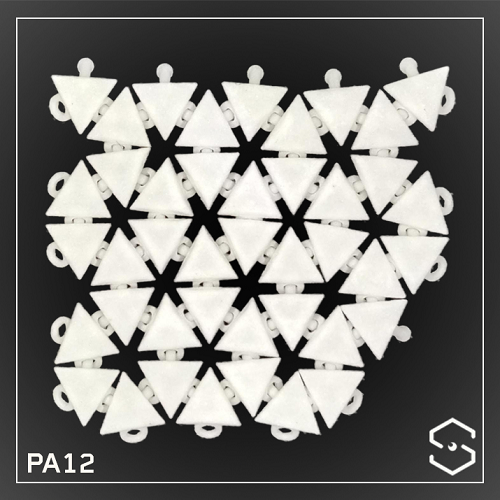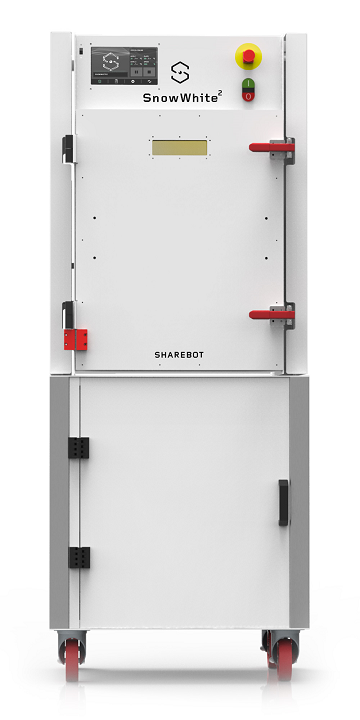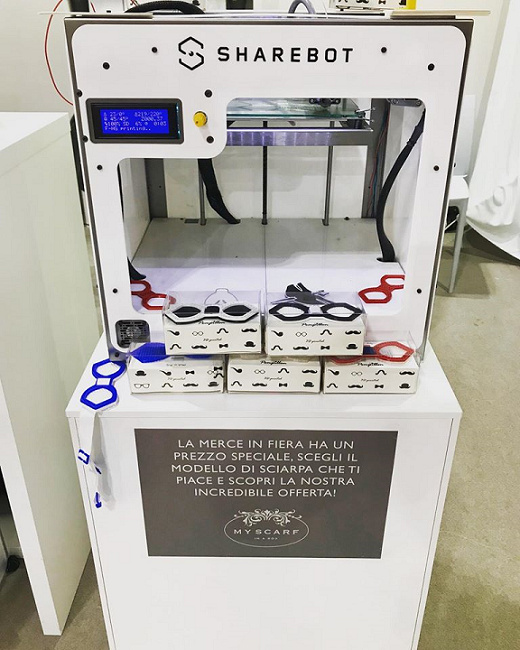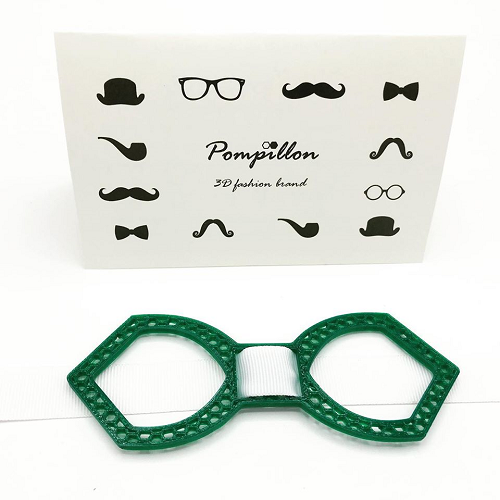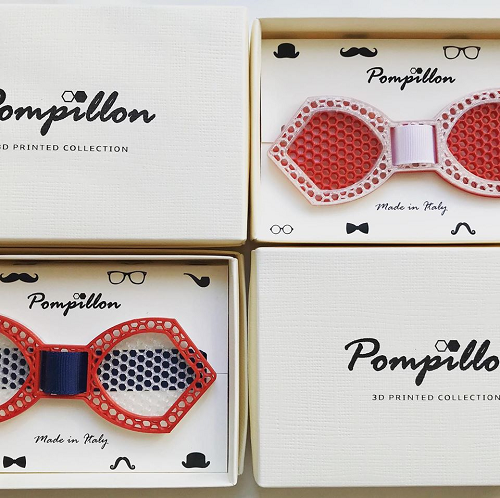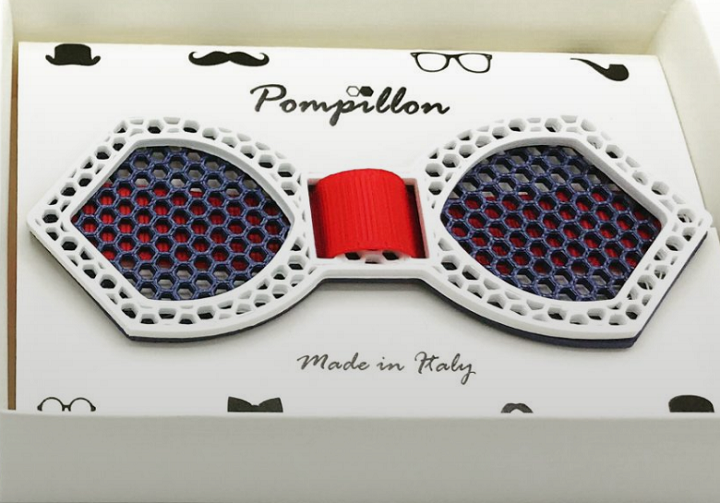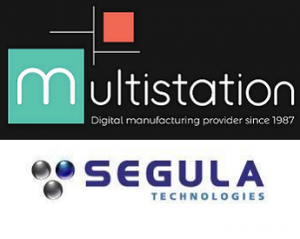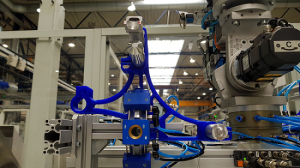In 2014, Italian 3D printer manufacturer Sharebot introduced its low-cost selective laser sintering (SLS) system, SnowWhite, at the TCT Show, two years prior to its market release. The company has since branched out in its 3D printer offerings, but is still improving its SLS system, releasing the SnowWhite2, an improved update to the original SnowWhite with some new features.
“SnowWhite was created to bring the advantages of sintering to small and medium-sized companies and laboratories, all in an economic, simple and effective way without sacrificing the professional quality of the result,” Sharebot states on its website. “The user can really “print in one click” because, once the profile of the material has been defined, the printing process is completely autonomous, requires no external intervention and the results are perfectly repeatable.”
The Sharebot SnowWhite2 features what Sharebot refers to as direct laser sintering (DLS) technology, infusing prints with thermal and mechanical resistance. Because of its CO₂ laser, multiple thermoplastic powders should work with this system, such as PA12 and TPU. It’s also possible to use special powders loaded with other material particles, like aluminum, carbon, or glass, to give prints a variety of mechanical, visual, and physical properties.
One improvement that the SnowWhite2 features is an upgraded software interface, which includes custom print profiles and open parameters. The printer uses the Simplify3D slicer, and has Ethernet connectivity, which partners well with the Sharebox3D print notification system.
Another one of the major changes is improved temperature management of the print chamber. The SnowWhite2 printer can be integrated with a separate module, the SnowWhite2 Nitro, that uses oxygen presence sensors to regulate the flow of whichever inert gas is used, nitrogen or argon. This makes it possible to control the atmosphere inside the chamber, which Sharebot says means no more yellowing prints.
The company says that the Nitro module can be easily added for a modified print atmosphere at any time, and that it’s easy to set the 120 kg printer up. According to Sharebot, it takes less than ten minutes to start up the SnowWhite2, about the same amount of time to move from loading your material to printing out the first few layers.
The company states that the printer’s other features include ease of use, minimal maintenance and fast cleanup, durable prints with highly detailed surfaces, a heated build chamber, and a 50 micron Z-axis resolution. Sharebot also notes that, on average, the new SnowWhite2 consumes less than 1.5 kilowatts of electrical per hour, includes an advanced laser control system with emissivity settings, and that all the unused powder is recycled and “can be directly reused in subsequent processing.”
Additional SnowWhite2 3D printer specs are:
- 100 x 100 x 100 mm print volume
- 100 micron XY resolution
- 0.2 mm spot dimension
- 35 mm/h Z-axis speed
- scan speed up to 3500 mm/s
With the SnowWhite 2, we are now seeing the second generation in low-cost SLS machines, as Sinterit has already released the Lisa 2 and Sintratec the S2. The goal with these systems is to bring sophisticated SLS technology down to a price point that smaller businesses and labs can afford. However, as these machines advance, one has to wonder how their costs will increase. Just as Sharebot has created its Nitro module for improved prints, Sinterit has launched a series of accessories that will likely bring up the total overall cost of operation. They may still be able to keep prices below high-end production systems, as Sinterit has demonstrated that it is still focused on reducing costs as much as possible with its accessories.
Sharebot is now taking pre-orders for the new SnowWhite2 3D printer, with delivery beginning October 1st, 2020. Also, there is currently a special discount for pre-orders of the printer until September 30; contact the company’s marketing department for more information.
(Images courtesy of Sharebot)
The post Sharebot Releases Improved SnowWhite2, Low-Cost SLS 3D Printer appeared first on 3DPrint.com | The Voice of 3D Printing / Additive Manufacturing.

